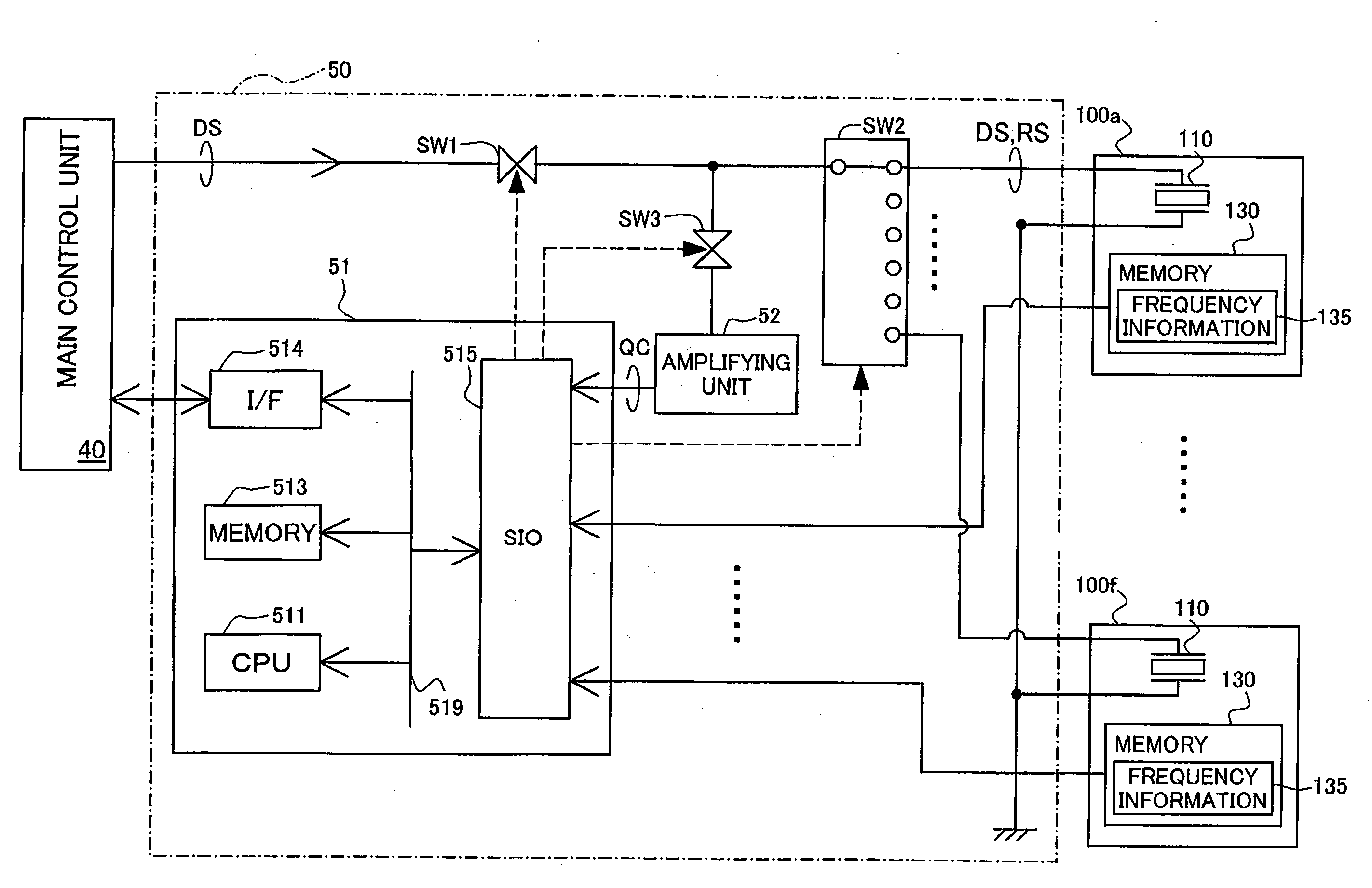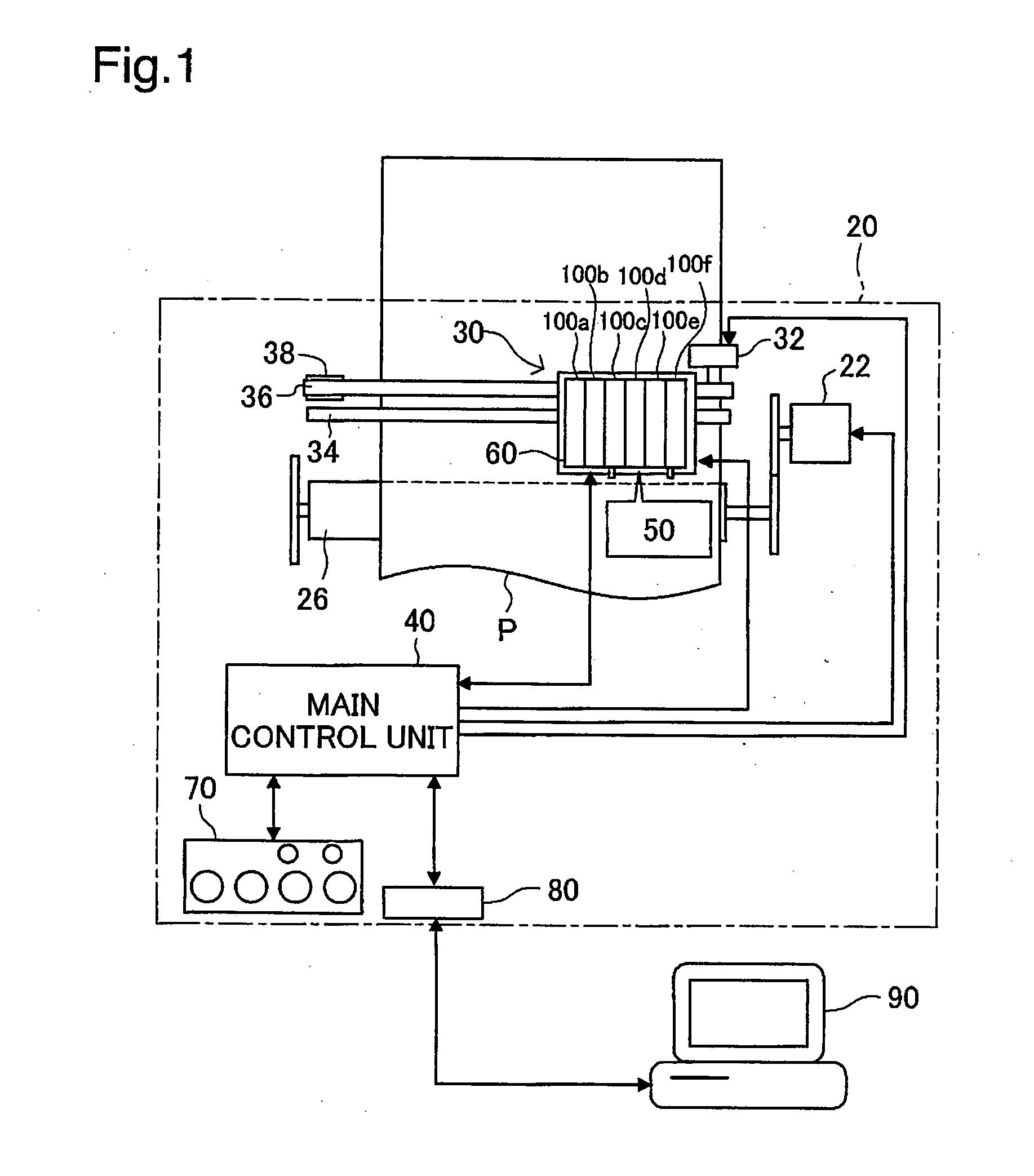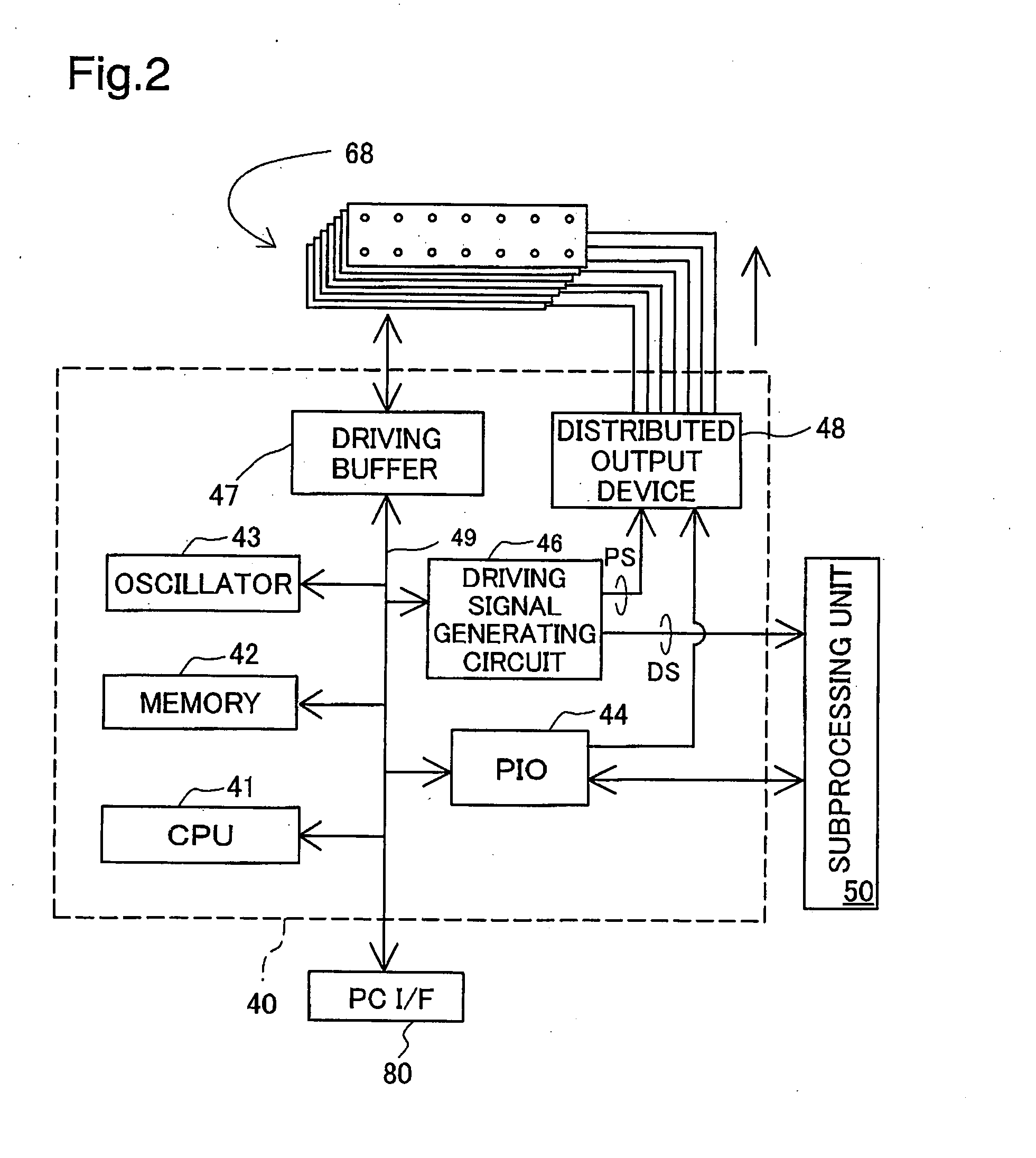Method for detecting printing material amounts in printing material container attached to printer
- Summary
- Abstract
- Description
- Claims
- Application Information
AI Technical Summary
Benefits of technology
Problems solved by technology
Method used
Image
Examples
first embodiment
A. First Embodiment
A1. System Structure:
[0060]FIG. 1 is used to explain the basic structure of a printing system in an embodiment. FIG. 1 illustrates an explanatory diagram of the basic structure of the printing system. The printing system comprises a printer 20 and a computer 90. The printer 20 is connected to the computer 90 through a connector 80.
[0061]The printer 20 comprises a secondary scanning mechanism, a primary scanning mechanism, a head controlling mechanism, and a main controller 40 for controlling the various mechanisms. The secondary scanning mechanism comprises a paper feeding motor 22 and a platen 26. The secondary scanning mechanism feeds the paper P in the secondary scanning direction by transmitting, to the platen, the rotation of the paper feeding motor. The primary scanning mechanism comprises a carriage motor 32, a pulley 38, a driving belt 36 that stretches between the carriage motor 32 and the pulley 38, and a slide rod 34 that is disposed in parallel with th...
second embodiment
B. Second Embodiment
[0132]The first embodiment, described above, included the natural frequency for when there is no ink from the time that the ink cartridge was manufactured. In the second embodiment, the following form is presented. A printer 20 of the second embodiment is provided in advance with a frequency table that associates a plurality of vibration frequency ranges wherein the tolerance range ER2 is divided into a plurality of ranges, with the first frequency F1 and the second frequency F2 for each vibration frequency range. The memories in each of the ink cartridges in the second embodiment contain rank information indicating the vibration frequency range wherein the natural frequency HE is included in the ink end state in the individual ink cartridge. The printer 20 determines the frequency of the driving signal based on the rank information that is stored in the memory for the cartridge to be processed, and based on the rank table. Note that the system structure in the s...
PUM
 Login to View More
Login to View More Abstract
Description
Claims
Application Information
 Login to View More
Login to View More - R&D
- Intellectual Property
- Life Sciences
- Materials
- Tech Scout
- Unparalleled Data Quality
- Higher Quality Content
- 60% Fewer Hallucinations
Browse by: Latest US Patents, China's latest patents, Technical Efficacy Thesaurus, Application Domain, Technology Topic, Popular Technical Reports.
© 2025 PatSnap. All rights reserved.Legal|Privacy policy|Modern Slavery Act Transparency Statement|Sitemap|About US| Contact US: help@patsnap.com



